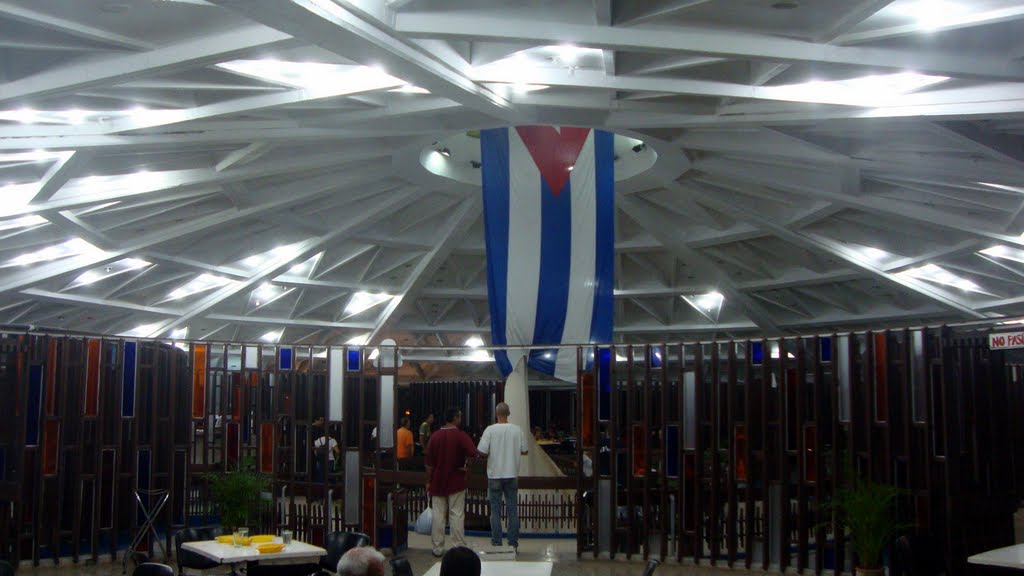It was perhaps the flow of the waters in Manzanillo Harbor, his native city, his decisive influence to rise in the course of successive successes in architecture (1924-2008).
He is unfortunately not with us anymore to answer our questions, but there are still his uncountable works where he devoted himself as designer and adviser, and he applied all he had learned in the 1940s when he studied his career at college.
No wonder those studious assert that his impression reflects the main features of the Cuban architecture carried out in the first four decades after the triumph of the Revolution, among others the merits that were worth to turn him the first in Cuba to receive the National Award of Architecture (1996) and three years after, the Distinction for the National Culture.
Girona was one among many professionals that did not deserted when the Cuban Revolution triumphed, and joined the vanguard that went together with his every day activities and teaching at the university. Since 1960 he was granted the title Tenure Professor of the Architecture Faculty of the University of Havana. That is why; this man that was originally born in Manzanillo, eastern province of Cuba was always recognized for his contribution to the Cuban architecture of the 1960s, for some the richest period of the modernist movement in Cuba, for its high social responsibility, and its technical-constructive range achieved despite the great lack of resources.
He is the author of significant works in the second half of the 20th century. He is remembered for his participation in the project of the National Auditory Office building which is at present the Ministry of Interior, the National Zoo, airports and hotels like Capri.
Also, his participation in works related to the touristic sphere in Varadero, Santa Maria del Mar, Cienfuegos, Trinidad and Camaguey. In the last ones we can appreciate an expression associated to the use of the structure with plastic purposes.
However, it is perhaps Guama Touristic Center (1964) in the Treasure Lagoon from Matanzas the most popular and admired among his designs and the Coppelia ice-cream parlor in the heart of Vedado (1966). The first one is located in Zapata Swamp declared National Park include in the integral plan for the recovery of the zone, one of the most backward places of Cuba
Girona designed a touristic center in the same refuge of many specimens from the flora and fauna, many of the endemic and at the same time, a facility that recreates the aboriginal communities in Cuba, including a Taina village that had turned museum at the open air where there are native houses from that period and sculptures in figures of natural size which were sculptured by the Cuban artist Rita Longa.
The architects Rita Maria Grau and Candelario Ajuria, and the engineers Maximiliano Isoba and Gonzalo Paz were together with him in the design of Coppelia ice-cream parlor which is a group made of a central building with a shape of a flying saucer and spacious terraces with restrooms and gardens.
It is said it is undeniable the influence of the Brazilian architecture which was at the vanguard by then, and the work has been constantly compared to the Cathedral of Brasilia, by Oscar Niemeyer, so the nickname Ice-Cream Cathedral. Nevertheless, Girona expressed several times that he was inspired in the Cuban native villages.
Likewise, he was part of the team headed by architect Antonio Quintana, and he participated in the project of the Lenin Park on the south of Havana, made of several facilities and services in complete harmony with nature, an initiative of the Heroine Celia Sanchez Manduley.
Girona also made incursions in monuments’ sculpture when he was granted the first prize in a contest for the sculptural block to the Memorial of Commander Andres Cuevas, in Sierra Maestra and worked in the rehab of the house where the historical leader of the Cuban Revolution, Fidel Castro Ruz was born.
Angola, Granada and South Yemen are among the countries that treasure some of Mario Girona’s projects, which are detailed like all his life; because he was working until the day he died on August 26, 2008 when this multi-prized professional physically disappeared, even in the section of Architects of America of the Enciclopidia of Architects made by the former Union of Soviets Socialist Republics (USSR).
